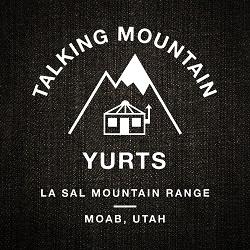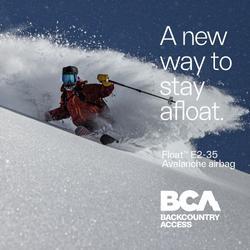Forecast for the Ogden Area Mountains

Wednesday morning, January 23, 2013
Most terrain has a LOW danger. Outlier concerns include wet and dry loose snow avalanches, shallow new wind drifts in steep northerly to easterly terrain, being on the wrong side of a cornice fall, or triggering a thin shallow persistent slab in the mid elevation shady terrain.

 Special Announcements
Special Announcements
Bruce Tremper will be giving a free Science of Avalanches talk tonight at 7pm at the beautiful Swaner Eco-Center in Park City.
Just a few slots left for the UAC's only Advanced Avalanche Class this year. This Thursday evening & Saturday, Drew will be leading an advanced avalanche workshop. This will focus on advanced terrain assessment, matching terrain to specific avalanche conditions, examining the 7 avalanche types, and combining on-the-fly-strength, structure, & energy assessments to make real-time Go or No-Go decisions in the backcountry. This is a great next step for a recent Level 1 or BC 101 or a great refresher for someone who has backcountry experience & realizes that next Saturday is most likely going to be a warm, sunny non-epic powder day, perfect for working on skills to put to work when the storm cycles resume. http://utahavalanchecenter.
Doug is one of the world's foremost polar adventurers and has skied both North and South Poles more than anyone on the planet. Doug is a ski mountaineer, ski guide, expedition leader, motivational speaker, humanitarian, stand up paddler and father. Doug was the first to ski and snowboard the highest peak in Antarctica (Vinson Massif 16,077ft) and is the first American male to ski across Antarctica from the coast to the Geographic South Pole.
Admission is Free- A $5 donation to the Utah Avalanche Center gets you 3 tickets to a drawing with great prizes from our sponsors
 Weather and Snow
Weather and Snow
Skies are clear. Temps and the southwesterlies have increased overnight ahead of tomorrow morning's weak cold front. Overnight "lows" in the alpine are in the mid 30s; trailheads and basins have bottomed out in the mid to high teens. Along the unobstructed ridgelines, anemometers are just starting to see winds in the 30-40mph range with gusts to 45. Nope, the cold front tomorrow "ain't much", but it heralds the decline of the ridge of high pressure that has weakened our snow surfaces and choked our lungs. My glass is half-full.
In the meantime, check out this great search engine put together by the folks at Montana State University where one can search and sift all day long through past and present articles and poster presentations from the biennial International Snow Science Workshops (ISSW). You can find great articles written by many Wasatch locals over the years, including Dr. Phoebe McNeally from the U's GIS lab, Park City Snow Safety's own Mark Saurer, UDOT Little Cottonwood's Matt McKee and Adam Naisbitt, Alta Snow Safety's Dan "Howie" Howlett, and many others. Check it out!
 Recent Avalanches
Recent Avalanches
None.
Wind Drifted Snow
Description
As we like to say, Low danger doesn't mean No danger. Minor wet and dry loose snow sluffs remain possible in the steepest confined terrain today. You may also crack out a new or old shallow wind slab over facets in the high alpine terrain as well. These don't pose much of an issue unless they knock you off balance in less-than-forgiving terrain.
The snow surfaces are weak, though not as weak as they could be (see Mark White's ob from yesterday). And they're not as weak as this video from Crested Butte shows...
Additional Information
We'll have clear skies, warming temps into the upper 30s to mid 40s and increasing southwesterly winds. Tomorrow's weak cold front should offer a couple inches of snow and drop temps back into the mid 20s. While weak, tomorrow's disturbance marshalls the first in a series of storms over the next 5-7 days. Ample moisture accompanies the initial set, but the colder storm set for early next week may look to dive south. Stay tuned. At least the valleys will be swept clean.
General Announcements
Go to http://www.backcountry.com/utah-avalanche-center to get tickets from our partners at Park City, Beaver Mountain, Canyons, Sundance, and Wolf Mountain. All proceeds benefit the Utah Avalanche Center.
If you trigger an avalanche in the backcountry - especially if you are adjacent to a ski area – please call the following teams to alert them to the slide and whether anyone is missing or not. Rescue teams can be exposed to significant hazard when responding to avalanches, and do not want to do so when unneeded. Thanks.
Salt Lake and Park City – Alta Central (801-742-2033), Canyons Resort Dispatch (435-615-3322)
Ogden – Snowbasin Patrol Dispatch (801-620-1017)
Powder Mountain Ski Patrol Dispatch (801-745-3773 ex 123)
Provo – Sundance Patrol Dispatch (801-223-4150)
Dawn Patrol Forecast Hotline, updated by 05:30: 888-999-4019 option 8.
Twitter Updates for your mobile phone - DETAILS
Daily observations are frequently posted by 10 pm each evening.
Subscribe to the daily avalanche advisory e-mail click HERE.
UDOT canyon closures UDOT at (801) 975-4838
Wasatch Powderbird Guides does daily updates about where they'll be operating on this blog http://powderbird.blogspot.com/ .
Remember your information can save lives. If you see anything we should know about, please participate in the creation of our own community avalanche advisory bysubmitting snow and avalanche conditions. You can also call us at 801-524-5304 or 800-662-4140, or email by clicking HERE
Donate to your favorite non-profit –The Friends of the Utah Avalanche Center. The UAC depends on contributions from users like you to support our work.
For a print version of this advisory click HERE.
This advisory is produced by the U.S. Forest Service, which is solely responsible for its content. It describes only general avalanche conditions and local variations always exist. Specific terrain and route finding decisions should always be based on skills learned in a field-based avalanche class




